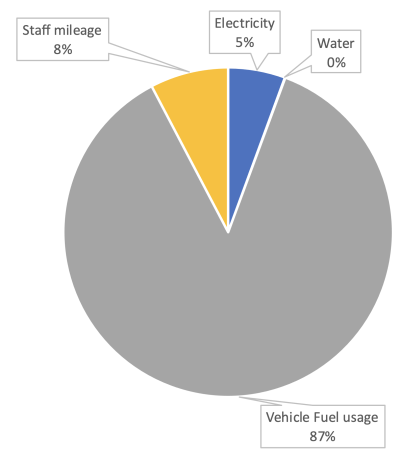North Norfolk Community Transport is committed to lowering the environmental impact of its activities. Our Trustees have made the following pledge which is identified in our operating strategy:
To develop a sustainability strategy for the organisation and reduce any negative impact on the environment.
We aim to achieve this by aspiring to the following challenges...
- Reducing our use of single-use plastics throughout our operations
- Incorporating alternative fuel technologies as they become available
- Working with other companies who share our values around sustainability
- Increasing the proportion of vehicles in the fleet that are not fuelled by Diesel
- Calculating our scope 1 and 2 carbon emissions so that we can aim to reduce them
- Producing a carbon reduction action plan
Measures of success:
- Vehicles in the fleet which do not use diesel to be 20% be January 2024
- Reduction in our carbon footprint demonstrated annually
Why has the charity decided to work towards completing these steps?
NNCT accepts that increasing atmospheric carbon levels in the atmosphere are having profound effects on the environment including rising atmospheric temperatures and changing weather patterns. People around the world experience more frequent extreme weather events which are now impacting on the way people and wildlife are living their lives. Sea levels are rising as the temperature of our planet increases and this results in shorelines being eroded, destroying ecosystems and displacing coastal cities and towns.
As a charity that cares about people, we want to make our own contribution to lowering the environmental impact of our activities.
In line with this NNCT has measured its own scope 1 and 2* emissions for the base year 2022 (January to December) at 35 tonnes of carbon equivalent.
| Carbon usage analysis | 2022 | Assumptions | Conversion factor* | Emissions (tCO2e) |
|---|---|---|---|---|
| Electricity (kWh) | 10,150 | N/A | 0.193 | 1.96 |
| Water (m2) | 36 | Supply & treatment | 0.421 | 0.02 |
| Vehicle fuel usage (ltrs) | 11,865.30 | Diesel | 2.558 | 30.34 |
| Staff milage (miles) | 9,780 | Average car - diesel | 0.2749 | 2.69 |
| Total | 35.0 | |||

* Scope 1 and Scope 2 emissions are categories of greenhouse gas (GHG) emissions that are related to an organisation’s energy use.
Scope 1 emissions are direct emissions from sources that an organization owns or controls, such as fuel combustion in boilers, furnaces, vehicles, or accidental leaks.
Scope 2 emissions are indirect emissions are indirect emissions from purchased electricity or gas that are generated at another facility





